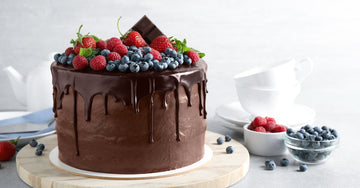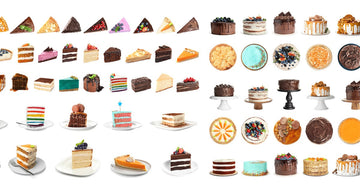If you don’t have much experience in the kitchen, then reading a baking recipe can feel like reading a foreign language. There are plenty of terms and techniques that show up in a wide range of recipes. If you don’t know what they mean, you can end up feeling lost and frustrated. You don’t want to just take a guess, either, because that can spell disaster for whatever you’re baking.
Brushing up on the most common baking terms every new baker should know can help you feel more prepared as you grab your apron and get to work. Set yourself up for success with these definitions and tips.
Terms for Blending Ingredients
A lot of the unfamiliar terms new bakers face involve techniques for mixing ingredients together. The majority of baking recipes rely on order and precision. The exact way you blend ingredients has a huge impact on the texture, flavor, and success of your bake.
For example, if a recipe says to whisk and you use a normal spatula instead, you’re not going to get enough air in the mixture to achieve the right texture. Therefore, new bakers should come to know the difference between common baking terms, such as whisking, beating, creaming, and folding.
Whisking
Whisking requires using a whisk to mix your ingredients. Because a whisk has more gaps than solid surface, it adds a lot of air to a mixture when you use it. This allows you to aerate your ingredients, as in the case of making whipped frosting.
Beating
Beating also aerates your mixture, but uses a paddle attachment on a mixer or a wooden spoon to do so. Beating is better for working with heavier mixes, such as cake batter.
Creaming
Creaming or creaming together is a blending method that involves a fat—usually softened butter. The process of creaming simply refers to beating the butter until it is light and fluffy. This helps create a fluffier batter when you add in other ingredients. Some recipes might have you creaming butter on its own before adding sugar, while others will have you add sugar as you cream the butter.
Folding
Folding is a blending method that works well when you want to mix lighter ingredients with heavier ingredients. It involves using a spatula to fold the contents of your mixing bowl so that the ingredients on the bottom move to the top of the mixture. Folding batter helps prevent overly dense bakes.
Sifting
Some recipes require you to sift dry ingredients such as flour. This process involves filtering the ingredients through a fine mesh strainer, known as a sift or a sieve. This breaks apart lumps and filters out any larger particles, leaving you with a finer, softer ingredient to work with. Sifting flour or other dry ingredients helps create smoother dough or batter for your baked goods.
Caramelize
Caramelizing can mean a few different things, but in baking, it refers to the process of slowly cooking sugar over low heat. This breaks down the molecules in the sugar and turns it into a rich golden-brown color, creating caramel. Caramelizing sugar is a common technique for filling cakes or decorating pastries.
With Damask Cakes, you don’t have to be an experienced baker to create something delicious. Check out our baking bundle gifts and see what you can create with the help of pre-measured ingredients and easy-to-follow recipes for cakes, cupcakes, and more.





